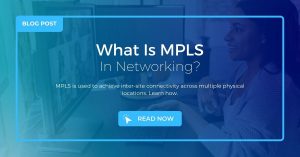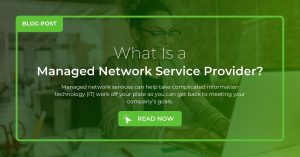
If you are experiencing slow internet, high latency, or frequent disconnects from your network, it could be due to a bottleneck and could affect your network optimization strategy. Network bottlenecks can occur in different parts of the network and affect your entire organization’s productivity. Network optimization is often needed to fix these types of problems and increase bandwidth so that everyone in the office can work like they’re supposed to. Bottlenecks in your network, even on a small scale, can cost businesses time and money. These are costs that add up, even if the bottlenecks go unnoticed from a management standpoint.
In this blog post, we will discuss six indicators of why your network has bottlenecks, and what causes them. To request a quote, schedule a meeting, schedule a demo, or speak to our sales team, please contact us at [email protected], or give us a call at (888) 365-2656.
Here are 6 Indicators, Plus What You Can Do to Fix Them
1. Slow Network Speed
If you notice that your internet speed is not as fast as it’s supposed to be, then there may be a problem with the connection between your ISP (Internet Service Provider) and their nearest POP (Point of Presence). This is a network bottleneck! Not only does it slow down your network, but it can also lead to larger network compatibility problems that go beyond speed. Thankfully, network optimization processes can help solve this.
2. Not Enough Bandwidth
Network bottlenecks can also happen when there’s not enough server bandwidth. Network bottlenecks are caused by either a lack of network capacity or insufficient bandwidth to handle the amount of data that is being sent over it. What causes this? Simply put, if you’re using an old modem and/or router then your internet will be operating with insufficient bandwidth.
Network optimization solutions can fix this bandwidth issue by upgrading your company’s hardware and streamlining your network to increase bandwidth at any scale.
3. Too Many Devices
If you have too many devices on your network, that could slow it down, too. Network bottlenecks are often caused by overloading the amount of data being sent across a network and not having enough bandwidth to handle all the information coming in or going out. For example, if you have three people using their own devices on one Wi-Fi router then they may be overloaded.
In larger businesses this is common, as entire offices may be overwhelming your network, requiring immediate expansion for optimal use.
4. Malfunctioning Hardware
Sometimes, just one single device malfunction can create a ripple effect on your network that will cause painful bottlenecks. Network troubleshooting is a complex process, but an essential one that a network optimization service provider can perform. By identifying malfunctioning hardware, the bottleneck can be rectified efficiently, and without much disruption. If that hardware is not identified, it could potentially bring down your entire network.
To learn more about VPLS’s server services and recommended hardware solutions, contact us at [email protected].
5. Bandwidth Dominance
If there is uneven demand on the network from a few sources that are using an irregularly large portion of your data, this can cause serious problems for everyone else. This often happens with users who download gigs of files at a time on a smaller or less efficient network. Using network optimization best practices, a good service provider can rectify this by expanding your network capacity, or identifying which devices are hogging up all the bandwidth.
6. Overloaded Servers
When servers have to perform too many duties all at once, it can cause a bottleneck or total crash of a network. Network bottlenecks can cause server crashes if unchecked. Network bandwidth and data storage are sometimes overlooked, but when these two factors become scarce it causes a decrease in the performance of your network’s servers which leads to crashing.
This is often caused by using outdated equipment that cannot handle current demands or having too many applications running at once on one machine. With high-quality network optimization services from VPLS, these issues are solved. VPLS can help you identify the top two bottleneck points in your network and recommend a solution to optimize your business quickly.
It’s Time to Consider Network Optimization with VPLS
If any of these indicators appear in your business, it’s time to look for network optimization solutions immediately. If these solutions sound like something that could benefit you, call us at (888) 365-2656 or contact us online for more information. Speak with a dedicated sales team and learn about how we can provide quality network optimization. Contract the best services on the market, so that your company’s productivity doesn’t suffer from slow internet speeds or disconnections due to network bottlenecks!
Read More from this Author


